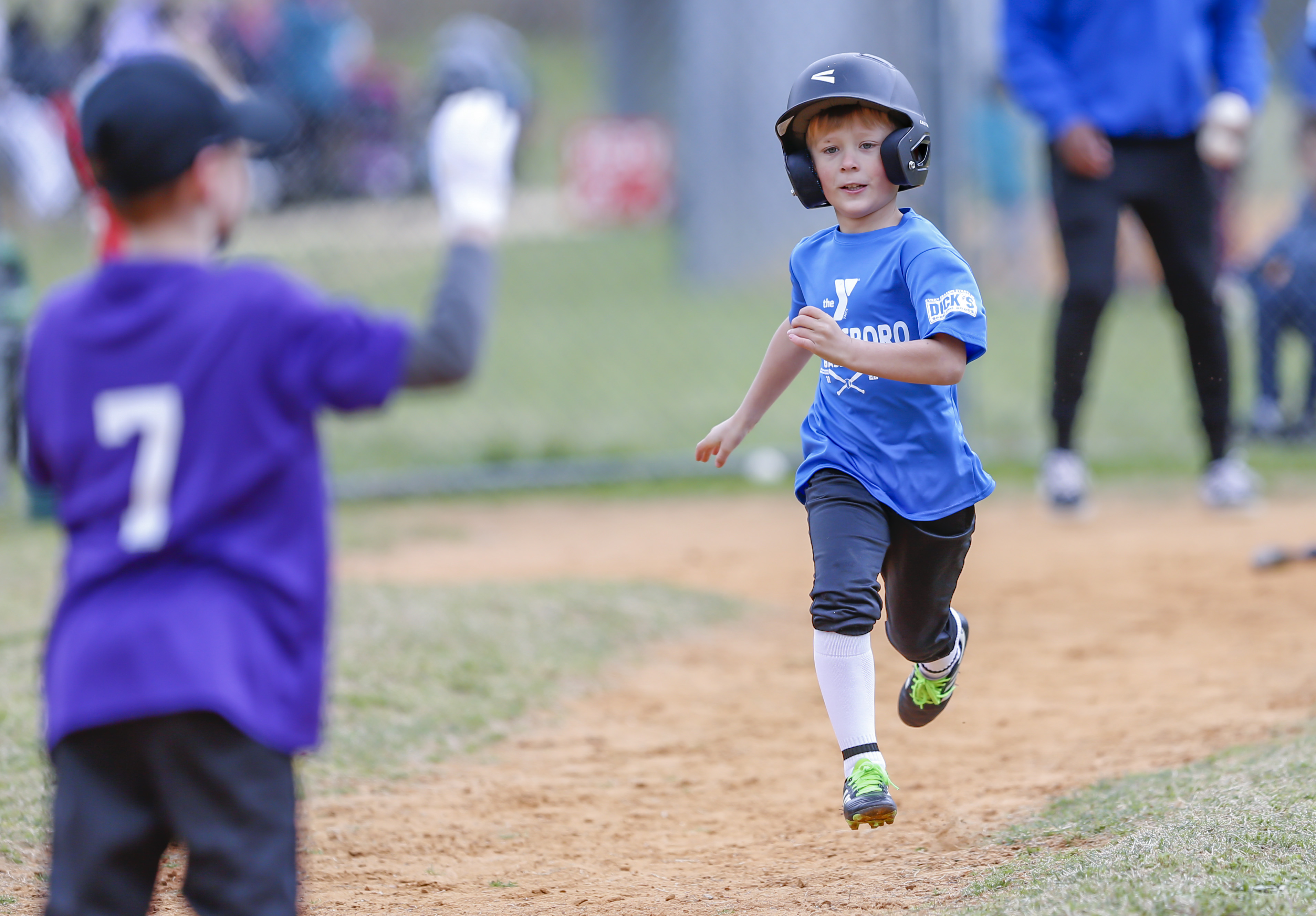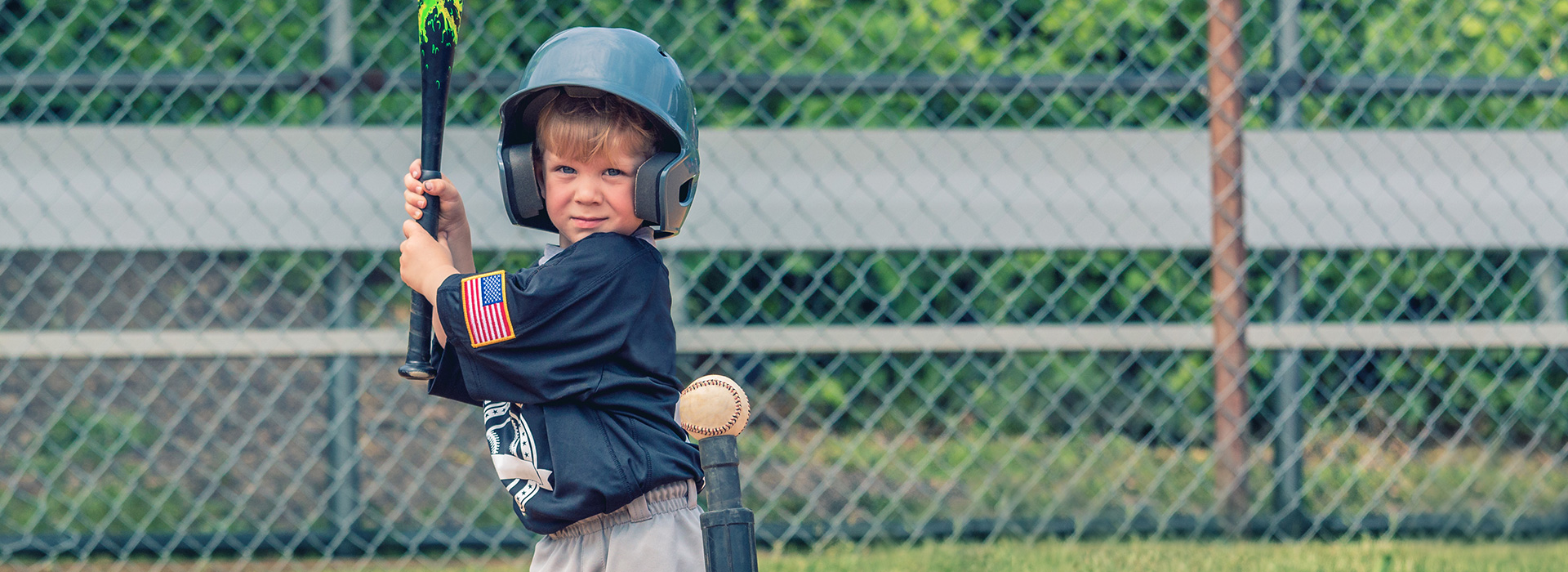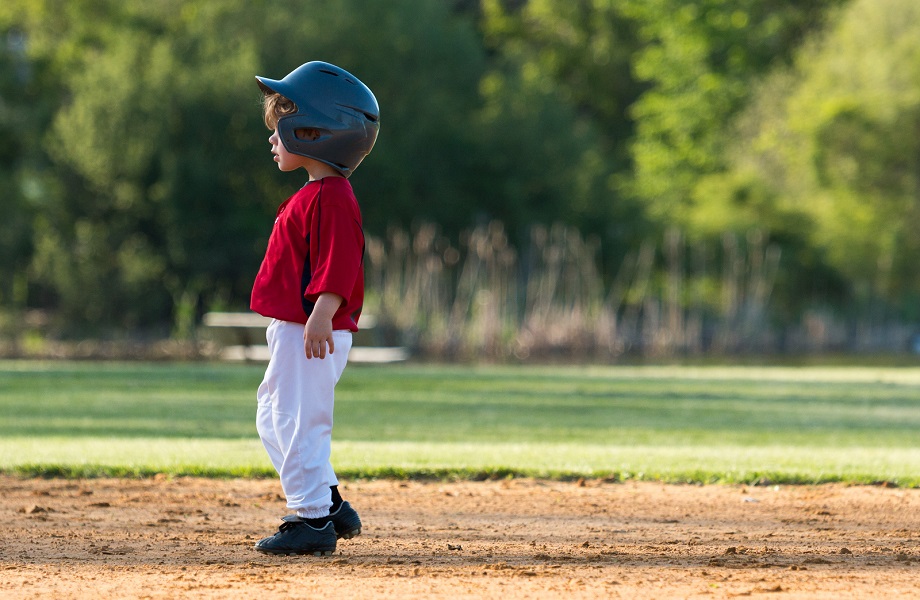T-ball is a great way for young children to start learning the fundamentals of baseball in a safe and fun environment. As a parent, you want to make sure your 4 or 5 year old has the proper protective gear to prevent injuries while playing. The essential safety items 4 and 5 year olds need when playing t-ball are a helmet, face guard, batting gloves, and cleats or athletic shoes.
Helmet and Face Guard
A helmet and face guard are crucial for protecting a young child’s head and face when at bat and running the bases. T-ball helmets are made of lightweight material like ABS plastic and feature padded inner linings for comfort and adjustable chinstraps for the right fit. The face guard attaches to the front of the helmet to shield the eyes, nose, teeth and jaw area. This prevents head and facial injuries from a batted or thrown ball impact.
Look for a t-ball helmet with strong ventilation so your child’s head can stay cool. Select a snug fit so the helmet doesn’t shift around. Label the inside with your child’s name so it doesn’t get mixed up with teammates’ helmets. The helmet should sit flat atop the head and low on the forehead about 1 inch above the eyebrows.
Click Here To See My Recommended Helmet for T-Ball
Batting Gloves
Batting gloves help improve your 4 or 5 year old’s grip when holding the bat. The synthetic leather material helps their tiny hands from blistering when swinging over and over. The gloves’ sweat-absorbing, flexible fabric also prevents the bat from slipping out of their hands.
Batting gloves should have a comfortable, flexible fit across the knuckles and wrist but not be bulky. Measure your child’s hand size and buy gloves based on age recommendations. Help your child put the gloves on correctly with the fingers lined up and velcro wrist strap secured snugly.
Click Here To See My Recommended Batting Gloves for T-Ball
Cleats or Athletic Shoes
The right footwearprovides traction and stability when running bases and fielding balls. Soccer cleats or baseball turf shoes work well for beginning t-ballers. The studded cleats provide grip running on dirt or grass. Make sure to break in cleats before the season starts to avoid blisters.
If your league doesn’t allow metal cleats, athletic shoes like cross trainers are a fine alternative. Look for laterally stiff shoes that resist rolling as kids change direction quickly. A mesh upper material keeps their feet cool and sweat-free. Ensure a properly snug fit so shoes don’t slip off when running.
Click Here To See My Recommended Cleats for T-Ball
Additional Protective Gear
Chest Protector
For kids playing catcher, a chest protector is mandatory equipment for protecting the heart, lungs and ribs. Young catchers lack the technique to safely block errant pitches, so the extra padding provides peace of mind. Look for adjustable, lightweight protectors designed for small frames.
Cup (for boys)
A protective cupsafeguards your son’s private area from harm when batting, running bases and fielding. T-ball specific cups come in youth sizes and comfortably slip into a jockstrap. Get one that fits snugly but allows free movement.
Mouthguard
Though not mandatory, a mouthguard is advisable to protect teeth and prevent dental injuries when at bat. Custom fitted guards offer the best protection and comfort but boil-and-bite versions are more affordable. Get your dentist’s input on the best model for your child.
Knee and Elbow Pads
Sliding pads add an extra layer of protection and may help timid base runners feel more confident. Look for slip-on pads that secure with adjustable straps and elastic sleeves for a snug fit.
Properly Fitting Safety Gear
Adequately fitted safety gear is crucial to protect small bodies effectively. Follow these tips when outfitting your 4 or 5 year old:
- Take accurate measurements of your child’s head, hands and feet. Sizing varies greatly in youth sports gear.
- Try gear on in the store when possible. Get a hands-on assessment of what size provides the best fit.
- Adjustable straps allow modifying helmets, pads and shoes to your kid’s proportions. Show them how to fasten and unfasten velcro straps.
- Replace old, ill-fitting hand-me-down gear. Used equipment likely won’t provide good protection. Prioritize new gear that fits.
- Ask coaches to do safety checks ensuring players’ gear is worn properly before games and practices.
- Replace damaged gear like cracked helmets immediately. Dinged up equipment compromises safety.
- Ensure all gear is comfortable without pinching, rubbing, or chafing. Pain leads to non-compliance wearing protective equipment.
- Explain how each item keeps them safe. They’ll be more willing to wear gear understanding the protective benefits.
Breaking in New Gear
Don’t wait until the first game to try out new batting helmets, shoes and other gear. New protective equipment needs breaking in for maximum comfort:
Helmets
Have your child wear their new helmet around the house for short periods to start loosening it up. Slowly increase the time worn each day. Adjust the internal pads and chinstrap until the fit feels just right.
Cleats
Help your kid break in cleats before practices begin. Wear them for short walks around the house to stretch out the stiff material. Apply moleskin pads to prevent blisters on heels or other friction spots.
Batting Gloves
Soften up new batting gloves by playing catch with them at home. The more your child wears them, the more the material will conform to their hands. Check for irritating seams you can fold under.
Chest Protector
Position the new protector on your kid’s torso at home. Have them move around to see if it impedes arm mobility when crouching or reaching. Better to address discomfort now before games start.
At the Park Gear Tips
Coaching your 4 or 5 year old on properly wearing and caring for gear at the field ensures they stay protected:
- Check all equipment before leaving home so you don’t forget anything. Having to share dirty helmets or other kids’ shoes puts your child at risk.
- Help your kid put on and take off helmets by grasping the sides, not just the brim or faceguard. This avoids neck strain or poking eyes.
- Store gear neatly inside a bag or gear box compartmentalized for each item. Teach your player to keep their gear orderly and not toss it haphazardly in the car.
- Ensure batting helmets have cage clips fastened when not being worn. This prevents falling over and scratches that compromise integrity.
- Keep extra sunscreen in your bag to reapply on kids’ faces. Sweat-resistant formulas help it withstand game conditions.
- Bring a non-spill water bottle for hydration between innings when not wearing a helmet. Dehydration quickly affects young kids.
- Inspect all gear after games for damage. Sanitize helmets and pads regularly to prevent spread of bacteria from sweat.
- Replace used faceguard cage clips so they fasten securely. Old clips can pop off, leaving faces vulnerable when batting.
- Disinfect gear before storage to kill bacteria. Use cleansing wipes on helmets, gloves, pads, belts and shoes.
Teaching T-Ball Gear Safety
As a parent, you play a key role teaching your 4 or 5 year old how to wear and care for protective gear properly. Consistent instruction ensures kids stay safe while reducing injuries, rashes and head lice outbreaks from shared helmets.
Lead by Example
Model safe behavior yourself by always using seat belts, helmets when biking, and goggles doing home projects. Let your child see gear protects both kids and adults. Explain your preventative actions minimize injury risk.
Make it Fun
Turn learning correct safety habits into a game. See who can strap on batting helmets the fastest while maintaining a snug fit. Praise your child when you notice them handling gear properly at home or the field.
Use Visuals
Post infographics demonstrating proper equipment fitting in your garage or locker area. Refer to them as visual reminders when inspecting safety before practices. Create fun stickers as prizes when you see your player following recommended guidelines.
Empower Independence
As your young athlete masters gear safety, begin letting them take responsibility. Allow time before practices for them to dress themselves fully. Offer help only for tricky adjustments like chinstrap fitting.
Correct Consistently
Politely correct your child each time you observe improper safety technique. Immediate feedback helps cement best practices versus allowing bad habits to form. Keep a supportive tone focused on avoiding injury.
Check Cohesion
Request coaches review gear fitting and rules about keeping it on in the dugout. A unified message between parents and coaches boosts compliance. Volunteering occasionally allows you to monitor adherence.
Troubleshoot Issues
If your child consistently removes helmets early or struggles with a particular piece of gear, determine the underlying cause. A different size jockstrap or helmet brand providing a more comfortable fit can help overcome noncompliance.
Buying Quality T-Ball Safety Gear
Investing in high-quality safety equipment tailored for your child’s size and shape provides superior protection. Better construction also makes properly fitting gear easier to find.
Shop Specialty Stores
Sporting goods stores with a strong baseball/softball focus offer a wider range of t-ball helmets, gloves, shoes and catcher’s gear. On-site staff can provide knowledgeable fitting advice too.
Research Brand Reputations
Longtime manufacturers like Rawlings, Wilson and Mizuno are trusted suppliers of baseball safety gear. Newer brands like Boombah and Akadema also receive positive reviews for quality and value.
Inspect Safety Certifications
Look for batting helmets with NOCSAE or C-fl safety certification stamped on the product. These independent assessments verify protection and construction standards are met.
Feel the Materials
Synthetic leather or mesh materials withstand the rigors of games and practices better. Metal parts should feel solidly constructed, not flimsy.movable joints.
Assess Comfort Features
Padding thickness, sweat-wicking inserts and adjustable components like chin straps increase comfort and achieve a customized fit. This encourages kids to keep gear on longer.
Consider Custom Options
Get custom batting helmets molded to your child’s head dimensions from vendors like Custom Sports Helmets. Though pricier, the precise fit cannot be beat.
Compare Warranties
Longer warranties provide assurance of lasting quality and durability. For expensive items like helmets and cleats, it’s worth spending more for better construction.
Signs Gear Needs Replacing
Don’t wait for equipment to completely fall apart before replacing it. Subtle signs of deterioration mean safety capabilities are compromised. Monitor your 4 or 5 year old’s gear for these warning signs:
Helmet
- Inner liner feels compressed or smashed
- Shell shows visible cracks or dents
- Faceguard feels loose or can detach
- Chinstrap buckle doesn’t fasten securely
Cleats
- Torn or peeling upper material
- Visible sole cracks
- Spikes coming loose
- Toes feeling squeezed as child’s feet grow
Batting Gloves
- Logos/stickers start peeling off
- Stitching unravels
- Thin, translucent areas
- Elastic wristband loses snugness
Chest Protector
- Stuffing appears flattened or worn down
- Straps stretch out with extended use
- Buckles crack or break
- Discoloration from accumulated dirt
Athletic Supporter
- Sagging fabric
- Jockstrap waistband lose stretchiness
- Cup twists easily within jockstrap pocket
- Stretched out leg bands
Mouthguard
- No longer fits snugly around teeth due to shifting teeth and jaw growth
- Gnaw marks visible
- Cracked or torn sections
At the first signs of gear breaking down, begin the replacement process. Off-season sales make it affordable to rotate in new equipment.
Conclusion
T-ball allows 4 and 5 year olds to harness hand-eye coordination and athletic skills while learning America’s favorite pastime. The right protective gear tailored for a child’s smaller frame is essential to prevent avoidable injuries. While buying quality helmets, gloves and shoes represents an investment upfront, properly fitted gear brings peace of mind knowing your child can play with confidence and focus on fun. Prioritizing protection will make t-ball memories with your son or daughter enjoyable for years to come.
Frequently Asked Questions
What are the basic t-ball gear requirements?
Most leagues require a batting helmet with faceguard, baseball or softball cleats, batting gloves and athletic supporter and cup for boys. Catchers need a chest protector, shin guards, catcher’s mask and helmet.
Can a bike helmet substitute for a batting helmet?
No, youth bike helmets are only designed to protect the head from linear impacts, not the ball strikes from multiple angles that occur in baseball. Baseball-specific helmets feature stronger shock absorption across the entire head.
Should my child wear a mouthguard for t-ball?
While generally not required, a mouthguard provides excellent protection against dental injuries from errant balls, swings and falls. Custom fitted guards mold to the teeth for the best fit.
How much do t-ball gear packages cost?
Complete starter packages of basic essentials like helmet, batting gloves, athletic shoes and ball bag begin around $50. Higher-end packages with alloy cleats and custom batting helmets run $200 and up.
Can my child wear soccer shin guards for t-ball?
Soccer shin guards don’t provide enough foot and toe protection for baseball positions like catcher. Stick with guards designed for baseball and softball that secure from the ankle down over the top of the foot.
When should I replace old safety gear?
Replace batting helmets every 2-3 seasons as padding compresses. Swap out worn cleats each year. Batting gloves and protective supporters should be replaced at least every 2 seasons. Catcher’s gear takes a beating, so replace sooner as signs of wear appear.
What is the best way to clean dirty gear?
Use a disinfectant spray formulated for sports equipment inside and out. This helps kill bacteria from sweat accumulation. For extra sanitizing power, seal gear in a trash bag with the disinfectant for a few hours. Air dry.






